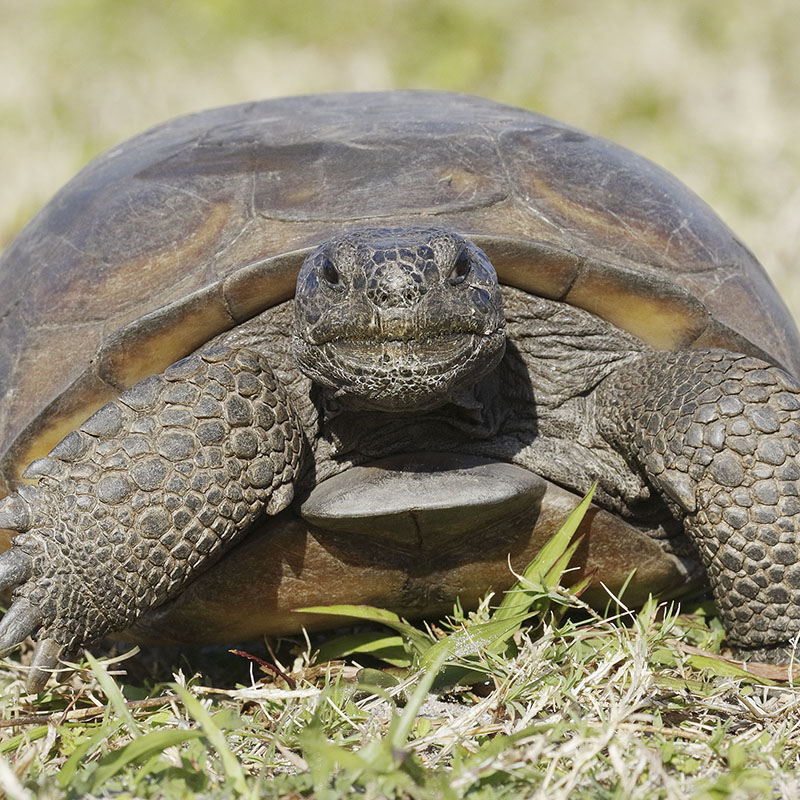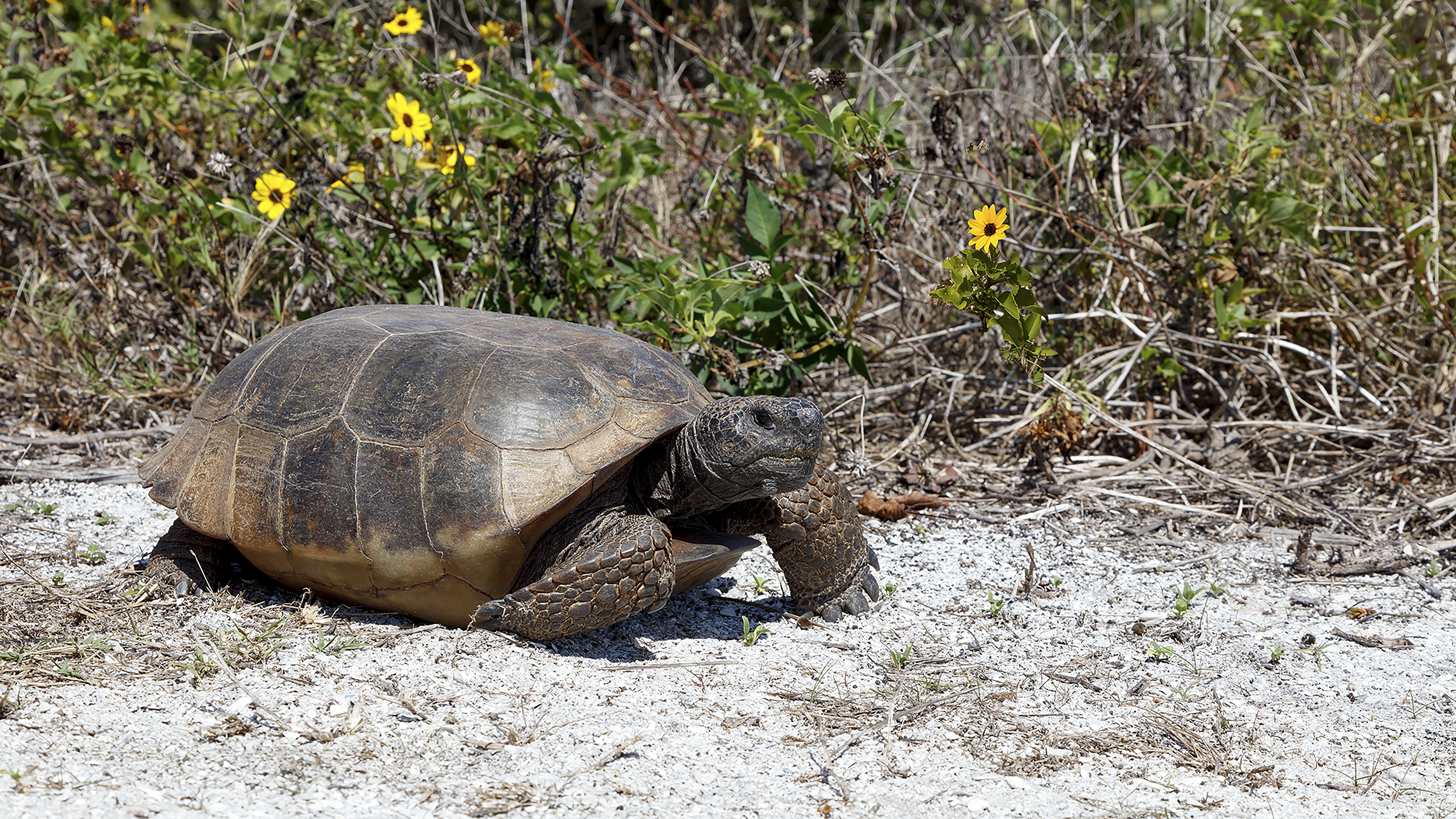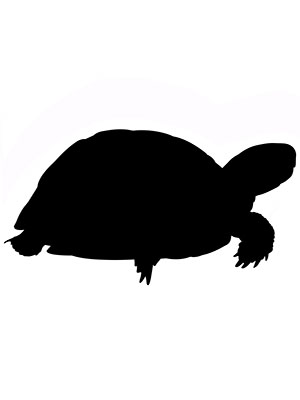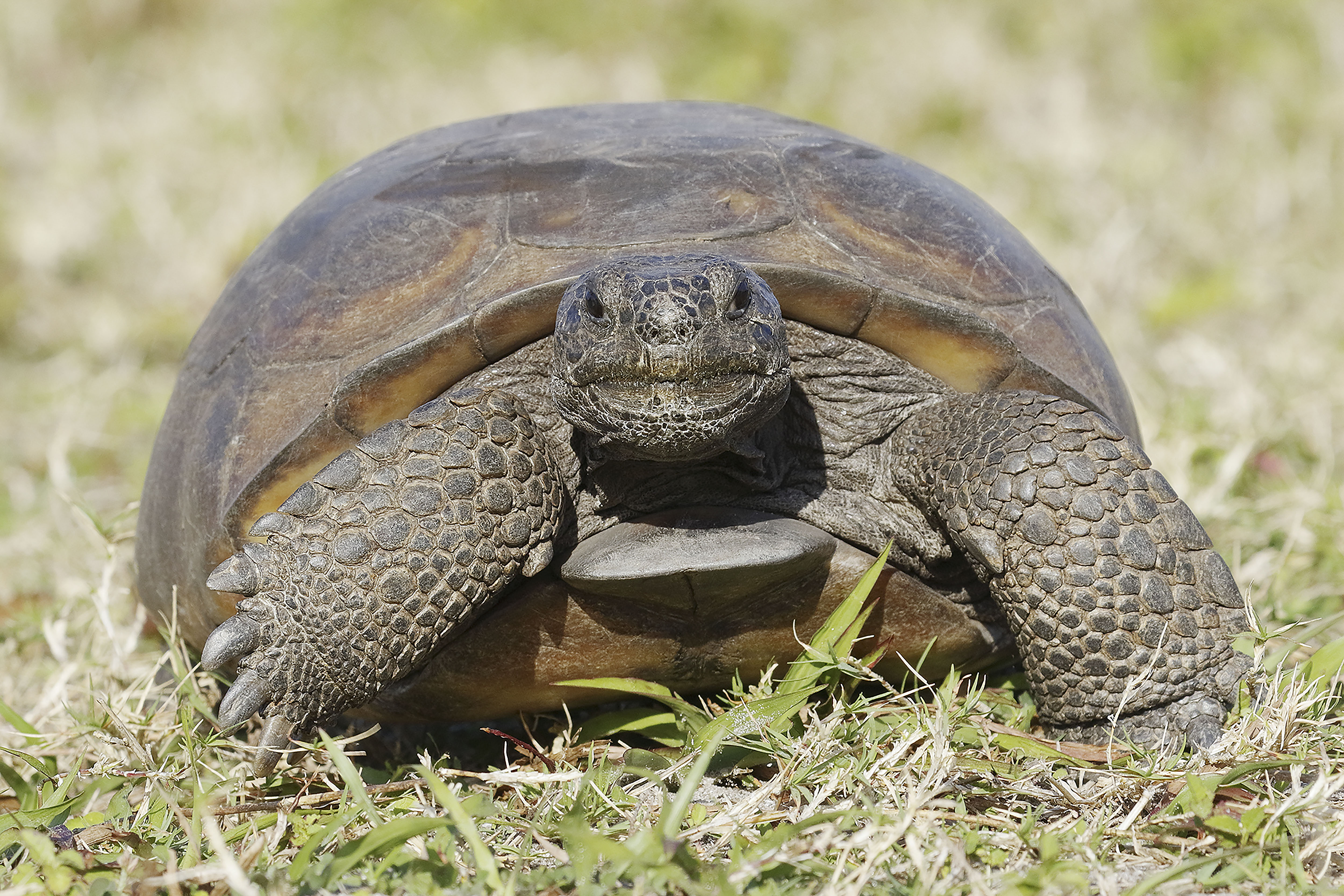Gopher Tortoise
(Gopherus polyphemus)

Appalachian and Mixed Mesophytic Forests
STATISTICS
Length up to
38.7 cm
Weight up to
5.5 kgs
Lifespan
70 years
Digs Burrows - Solitary
The Gopher Tortoise prefers dry sandy soil and a thin tree canopy with low growing plants. It digs underground burrows of up to two meters deep that maintain temperatures throughout the year, providing the tortoise protection from fires, drought, extreme temperatures, and predators.
This species depends on the sun for its warmth and is, therefore, most active during the day. It will remain in its burrow if temperatures are not conducive to activity and is estimated to spend 80% of its time inside the burrow. The Gopher Tortoise is recognisable by its unwebbed feet and shovel-like forearms adapted for digging. It is usually brown, tan or grey in colour.
It feeds on up to 400 plant species, many of which are of the low growing variety such as wiregrass, prickly pear cactus, blackberries, and paw-paw. 80% of its diet comes from grasses, but it also eats shoots, stems, leaves, and pine needles. These plants provide water for the Gopher Tortoise along with their nutritional value.
Eggs are fertilized internally, and a clutch (of on average six eggs) is laid each season. The incubation period can take up to 100 days. The Gopher Tortoise exhibits no parental care other than creating the nest and covering the eggs so survival rates are low, and it’s estimated that a female only has a successful clutch every ten years.
This species is preyed upon by raccoons, coyotes, bobcats, wild boar, skunks, hawks, bald eagles, and snakes. Young hatchlings are the most vulnerable. But the Gopher Tortoise is vital to its community: Over 350 species use the Gopher Tortoise’s burrows, which are stable habitat.
BIODIVERSITY BENEFIT
Habitat Creator
THREATS
Habitat Loss
Due to mining, agriculture, roads, urbanization.
Habitat Fragmentation and Roads
Killed when crossing roads.
PROTECT THE WILDARK 100




